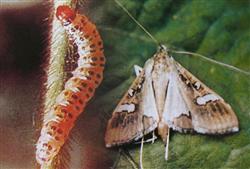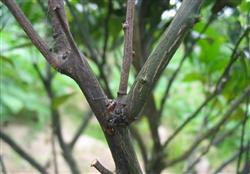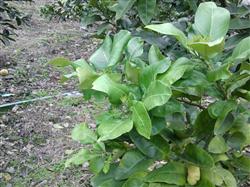Planting techniques of sugar orange: how to control Spodoptera litura?

How to control Spodoptera litura with sugar tangerine? What is the damage rule of sand sugar orange withered leaf moth? The adults of Spodoptera litura can be found in the field from March to November, but more in autumn. Most eggs occur in the field in early June, August and early September, but the number of larvae is not much because of low egg hatching rate and high larval mortality. In Guangdong, the time for adults to harm sand sugar tangerine is from mid-August to December, in which the damage to early-maturing Wenzhou mandarin begins from the middle of August, and the damage is the most from late August to early September. The mid-maturing sweet orange varieties began to suffer from the middle of September, and the most from late September to late October. Adults often lay eggs on the back of leaves, and constant grains are laid together. The first instar larvae have the habit of silking, and they often land on 3 pairs of abdominal feet at rest, all in the shape of "U" or "?" Shape. The larval hosts found are Mufangji, Aristolochia mandshurica, Tongcao and Ten Gonglao, etc. Adults have a little false death habit, lurking during the day, fly into the orchard after dark to harm the fruit, like to choose healthy fruit. After the citrus fruit was killed, it was small pinhole-like at first, and there was glue outflow, then expanded into cork, waterlogged oval brown spot, and finally the whole fruit rotted and wheezed. The control methods of citrus withered leaf armyworm are as follows: (1) rational planning of orchards. Sugar tangerines should be planted in large areas in mountainous and semi-mountainous areas, and mixed planting of varieties or many kinds of fruit trees at different maturity stages should be avoided as far as possible. (2) eradicate the larval host. From May to June, the stems were coated with herbicide Zhenjia No.1 or sprayed with Zhenjia No.2 to completely eradicate Mufangji and Hanfangji in and around the sugar orange orchard. (3) Light trapping. Black light, high pressure mercury lamp or frequency vibrating insecticidal lamp can be installed. Hang around the canopy in the evening, or wrap naphthalene pills with plastic film, stab several holes, and hang 4-5 tablets per tree. (4) avoiding. Each tree uses 5-10 sheets of absorbent paper, each dripping citronella oil 1 ml, hanging around the crown in the evening, or wrapping naphthalene pills with plastic film, piercing several holes, 4-5 tablets per tree. (5) fruit bagging. Early-maturing and thin-skinned varieties should wrap their fruits in paper bags from mid-August to early September. Rust and lice control should be done before wrapping fruits. (6) Biological control. Trichogramma spawned in large numbers around July, released around the sugar orange orchard and parasitized to absorb the eggs of fruit armyworm. (7) Pesticide control. Spray 5.7% Baishu EC or 2.5% Kung Fu EC 2000-3000 times at the beginning of the damage. In addition, it is also effective to trap and kill adults with banana or orange fruit extract (20 times liquid of trichlorfon) or to kill adults artificially at night. Click to get more sugar orange planting techniques click to get more fruit planting techniques
- Prev

Sugar orange planting technology: how to treat sugar orange tree gum disease?
How to treat the gum disease of sugar orange tree? Please introduce the control methods of sugar orange tree gum disease can be controlled with reference to the following methods: (1) strengthen cultivation management: increase the application of organic fertilizer, acid soil orchards, 70-100 kg per mu of lime or 0.25 kg superphosphate per adult tree, neutralize soil acid.
- Next

Planting technique of sugar orange: how to apply fertilizer to sugar orange?
How to fertilize sugar oranges? Which nutrients are good for sugar tangerines? Please give guidance on the essential elements in the growth process of sugar orange: nitrogen, phosphorus, potassium, (a large number of elements), calcium, magnesium, sulfur (medium elements), zinc, manganese, iron, copper, boron, molybdenum, (trace elements). Each kind of nutrition has a certain function, lack.
Related
- Moge, come on! The staff of the peasant association in the producing area of cantaloupe were frightened when the crowd gathered.
- Causes and Solutions of low Fruit setting rate of Apple
- Symptoms and control measures of passion fruit virus disease
- Fruit growing lesson: how do apple orchards keep high yields?
- Can you build orchards in the mountains? What are the pros and cons?
- How to manage the coloring period of Crisson grape?
- This paper introduces the processing technology of two kinds of fig products.
- How much is a month for retired teachers in rural areas by 2020?
- How can strawberry planting increase sugar content? We should pay attention to management in many aspects.
- What are the cultivation techniques on how to improve the yield of golden fruit?

